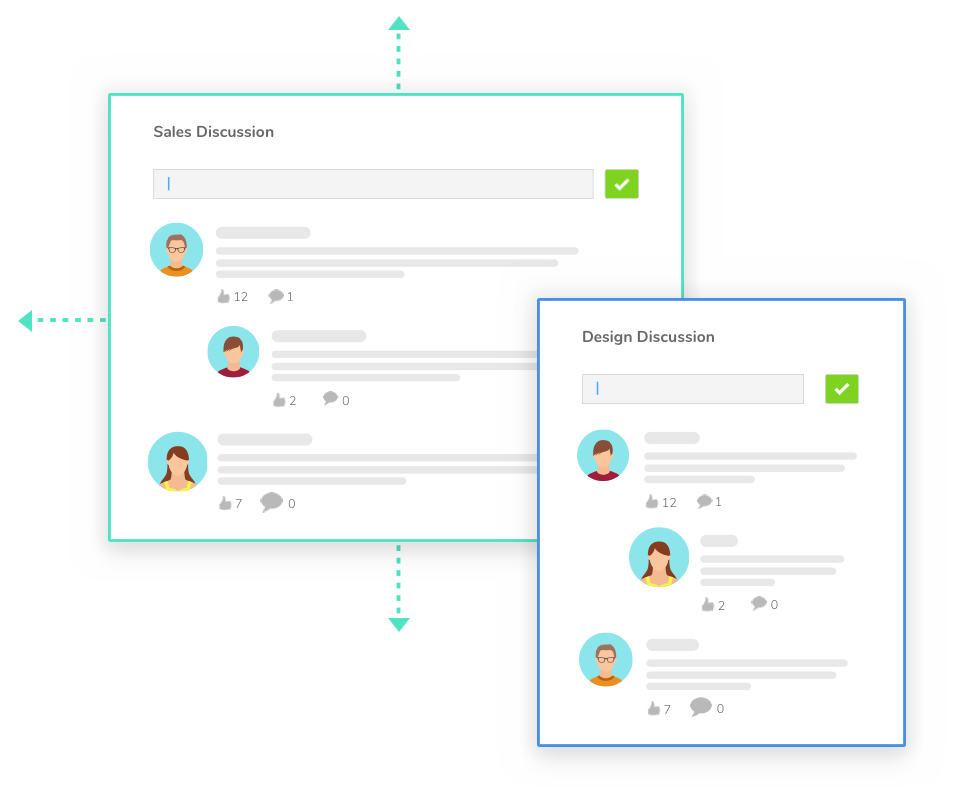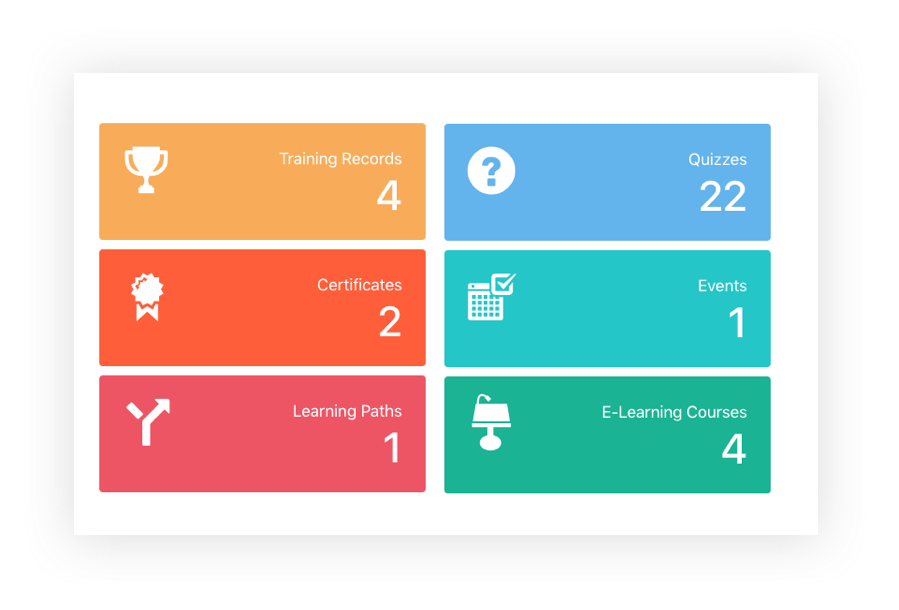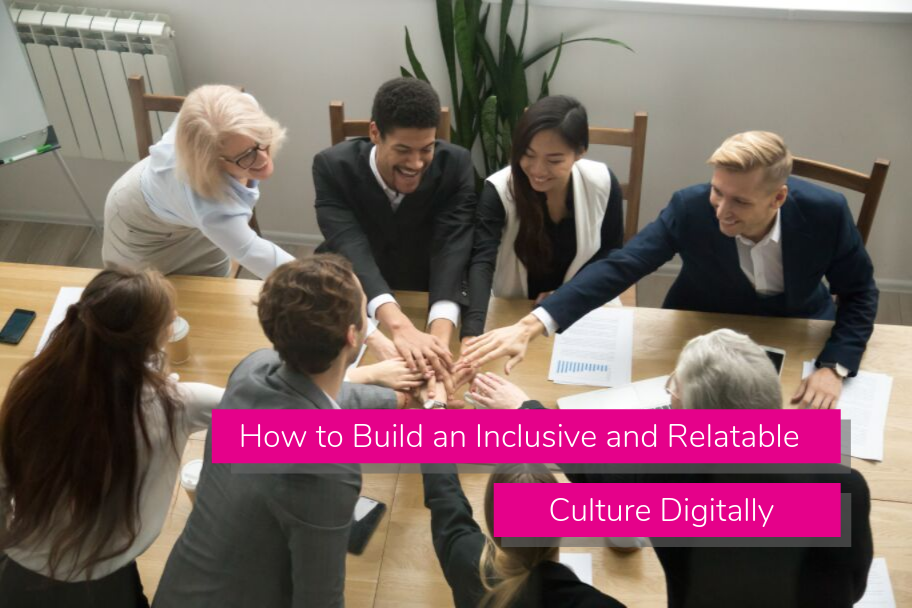There is validity in the claim that digital workplaces and a surge in remote working have created even more fragmented teams, and this engagement at “arms-length” throws up serious challenges. The tools for effective, real-time communication and collaboration have never been more abundant. However, there are also far more opportunities for insidious issues to grow, for staff to hide their issues, and for good ideas to go “unvoiced”. We have progressed quickly from open plan office layouts for staff co-operation and interaction, to barely taking our eyes off our devices. Automation, digital connectivity, and data management are the driving forces of modern business, but behind these there are still real human beings, with all the same emotional and mental needs whether their workplace is an office, factory, or their kitchen table.
What’s missing from digital workplaces?
Back in the mists of time, the most important feedback and discussion arose during those informal moments in the workplace. Gems of intel sprang up while chatting around the coffee machine, a chance meeting in a corridor, or small talk prior to a meeting starting.

Innovation and ideas can spark during spontaneous conversations over coffee
True leaders used a shared ride in a lift, eating lunch in the canteen, or even drinks after work to gauge workforce mood or pick out individuals needing additional support. These were also potentially the moments when authentic working relationships were formed, issues were discussed, and managers were at their most relatable. Now, your colleagues can be at multiple locations and face-to-face liaison can seem archaic and disruptive!
Culture can bridge the interaction divide
Can an employee intranet portal replicate these spontaneous and natural processes? It can, if it is supported within your digital workplace by a culture of relatability, inclusivity, and openness. This can mean artificially creating fertile ground for the human interaction that used to be a natural feature of working life. It also involves applying advanced leadership thinking to stimulate closer working relationships and building intranet software that’s user-friendly.

Making teams relatable
In this context, relatability hinges on an important aspect of modern management – one that can never be undervalued: emotional intelligence. This can literally involve creating ample face time to give team members a forum for honest, free-flowing interaction. As a line manager, literally checking in with people can never replace being available 24 hours a day digitally. Getting the whole team in the same place occasionally is an investment in the bonding and interaction that builds strong outcomes. The digital workplace should enhance this culture of relationship-building by offering open forums for team communication – such as corporate social networks. These are opportunities for staff to discuss ideas, questions, and concerns amongst themselves. Staff should be actively encouraged to use these forums during their working hours. This gives your intranet the power to be a “coffee machine meeting place” digitally.

Encourage your staff to use communication tools, like corporate social networking, to discuss ideas and build relationships
Leave no team member behind
Inclusivity is not just about adhering to equal opportunities legislation. It’s about taking strides as an employer to make sure no employee is marginalised or overlooked – no matter how remotely they work but also how quietly they go about their daily tasks. Having a wonderfully functioning intranet is cause for celebration, but only if everyone is sufficiently engaged with it. An inclusive culture makes it clear that there is no “shame or blame” if someone expresses that they are unclear on a matter, or if they flag up a problem of some kind. Giving everyone a platform to voice issues or ideas makes good commercial sense too. From this comes insights into business improvements and innovations, and early warnings of issues that could grow if left unchecked. Part of this culture of inclusivity comes from managers being willing to be honest and open about their own “true self”. If they are seen to be taking professional development courses, learning from mistakes, and sharing their passions and ideas, it makes it more likely colleagues will do the same. Within intranet software, any training offered to staff needs to be structured to ensure that everyone can learn at their own pace, without judgement.

E-learning software within your intranet empowers staff to learn at their own pace
Open forums for exchanging ideas or issues for management recognition, response, and even reward should be an integral part of internal communications. These are digital suggestion boxes, but also digital “paths” to your line manager’s open office door, providing constant access to supportive responses.
Intranets that build an interactive culture
Clearly how intranet software is configured within your organisation, dictates how well it supports a relatable and inclusive culture. However, how it is used is also a linchpin! Having digital workplace devices, software, and processes geared solely on building profitable growth, and providing a steady flow of management documentation, is missing out key features. Your intranet should stimulate and support two-way communication, and it should be built – and presented to staff – in a way that makes them feel recognised and incentivised to respond. The more comfortable and engaged they are within internal communication, collaboration, and data sharing systems, the more likely they are to benefit from your culture of relatability and inclusion. Which means digital chats on a “virtual corridor”, and a workforce that is passionate about playing a role in your shared vision.





